#what is rfq
Explore tagged Tumblr posts
Text
0 notes
Text
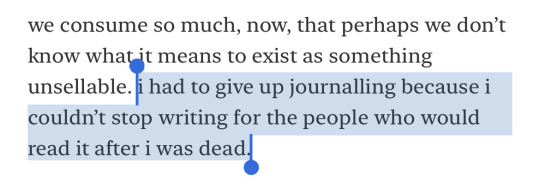


on the relationship between writer, reader, and text
rayne fisher-quann, standing on the shoulders of complex female characters | ellena savage, "yellow city" in blueberries | ellena savage, “houses” in blueberries
#the yellow city one is self-referential. she's having what can almost be considered a three-way conversation with herself#rayne fisher quann#standing on the shoulders of complex female characters#internet princess#ellena savage#blueberries#yellow city#currently reading#web weaving#parallels#rayne fisher-quann#i made this prematurely. the houses quote reminded me so much of rfq
110 notes
·
View notes
Text
I was looking through the CM gifs on here and... multiple MGG ones???? EXCUSE ME WHERE ARE THESE FROM??? THIS BRICK WAS THROWN AT ME???
It goes from tame to 100 rfq so warning lmao
18+ MDNI below cut

I can't even describe how much i love this one, and theres either another one similar to it or a clip that I've seen that flashes by my mind daily, god i just wanna stroke his face lovingly, I don't even like stubble but the idea of him with stubble- I need to sit down...

okay, i know some people dont like seeing their actors/characters kiss BUT BRO imagine thats you, got me giggling over here... he's got the most kissable set of lips it's crazy... and his hair in this one too!??!? the stubble!??!?!
And there's also multiple of more intense kisses, and i just have to say that i need him to eat my face, like I'm not even joking, all sloppy style, idc
now... here's the banger (no pun intended), and I'm gonna warn you for this one, it's a lot... if you wanna stay sane leave now, turn back, i won't blame you

WHO DID THIS? WHO... WHO DID THIS? WAS THIS NECESSARY? I have no other words... other than you know it's good... I'm sorry... (I'm not...)
(also for... educational purposes... what movie is this from?)
#18+ mdni#criminal minds#criminal minds x reader#criminal minds smut#Spencer Reid#spencer reid x reader#spencer reid smut#matthew gray gubler
110 notes
·
View notes
Text
made a Scarlett and The Shakers iceberg! ^_^ what do y'all think? @ace-of-hearts-sats @ace-of-spades-sats3 @ace-of-diamonds-sats @ace-of-clubs-sats

Points explained:
Level 1!
Reason for "and The Shakers": Scarlett said there was already a band named Da Shakerzz >_< so she added her name on front of it and spell it correctly to avoid being confused with that band.
Scarlett and Rudy are dating: Everyone knows that, no need to explain!
Clover is the youngest of the group: This is also a pretty known fact, she's just 19, while the others are all 21 or older
Everyone has worked for Papa Louie atleast once: As simple as that. Scarlett and Rudy worked at the Cheeseria, Marty at the Burgeria and Clover at the Sushiria
Level 2!
SATS made fun of the RFQ: The Romano Family Quartet got made fun off in a playful way in the WTTLO? (Who turned the lights off?) album cover. The 4tet took it nicely and pranked back with the "Opposite day!" album
Remake of Endless Void is better than the original: A big part of the fandom thinks that this is true for various reasons. On my side, both versions are good! ^^
"And I know it's just a rumour" phrase: this has been a recurring phrase in the SATShakers' music, having appeared once in every album from Ying Yang on
Ying Yang was gonna be named different: The album and song were both gonna have different names. One of the chosen names for the album was "Good and Evil" but they changed it since there was already an album under that name; on the topic of the song, it's previous names were "As Double-sided", "Good and Evil" and "good-and-evil-intro-song.mp3"
Level 3!
A Little Too Normal first album covers: This album was gonna have a different cover than the one we know, which is a face made up with pieces of all the members' faces and hair. Most of the unchosen album covers were arrangements of facial features (like the chosen one) but differently.
Rita and Xandra were part of the group: The first 2 years of existence of SATS had the 4 main members and also Rita on backing vocals. I, Xandra, was on the band till the year and 2 months, I played the keyboards and occasionally was the main singer (very few times tho)
The first logo of SATS: The logo used to be a plain, vertically stretched text in lowercase that said "scarlett and the shakers :P" , it was changed after 3 years.
Unreleased songs: These songs were made by SATS and never got into any album. For example, WHAT THE HELL?!, which is the first and only song they made sung by a Vocasyn.
Fans that say "SHAKEREFERENCE!!!1!!1!!11!!" : This is something that the people in the fandom do when they see something that's, in some way, related to SATS.
Level 4!
www.sats-officiaI.com: This is a fake version of the SATS website. Even though it looks like the real one, the L in official is actually an uppercase i. The fake website was taken down after a fan informed Clover about it.
Shady Business Tactics was gonna be in Well-behaved: This is a song that Clover released in her solo album Sushi Salmonella. The song was gonna be in Well-behaved but it didn't make the cut since it didn't fit in with the other songs
Lost Vocasyn covers: On the 1st year of existence on the band, SATS covered some Vocasyn songs. Most of these covers are lost and we only know of their existence because of Vocarank clips. Some of the lost covers are Alix of human sacrifice, Kyu kyurain, One more roll, I'm sorry I'm sorry, Kitsune's marriage, Stop nagging me! and Melt.
Canceled collab with Doom Bruleé: When the band was starting (2 years after SATS), Scarlett proposed a collaboration between SATS and Doom Bruleé. Orion rejected the proposal due to unknown reasons.
The debut album was considered lost media: It was released in 2005 and simply called Scarlett and The Shakers. After 2 more album releases and seeing it wasn't successful, SATS deleted all trace of their debut album on the internet. The problem is that the fans wanted to listen to the album even though it was lost. Hopefully, Rudy had the entire album on a pendrive, which he shared on a forum and posted on UTube.
Extras!
Rudy and Scarlett got beaten up recording a MV: On the recording of the music video for Bad Night, Scarlett and Rudy were beaten up after recording the part where the whole band holds umbrellas outside. Rudy got a black eye and Scarlett lost a tooth and was bleeding out of her mouth a bunch. They ended up recovering well, but no more MV for SATS songs were recorded outside.
20 seconds of Tohru: These are mini segments included in the episodes of The Shakers' Internet Show. They mostly include Tohru goofing around doing her own things, like cooking!
SATS reference in a videogame OST: The 6th release of the videogame series Touhou Project has a song where one of the parts sounds like the guitar solo in WHAT THE HELL?! . The song in the OST is And then there were none!.
Everyone in the band has side projects: All the current members of Scarlett and The Shakers have side projects related to music. Rudy goes under the name Ruru and released Broken swing, Clover has released Sushi Salmonella under her own name, Marty has a UTube channel for guitar covers of various songs, and Scarlett made an album collaboration with Carlo called Foodini's Fabulous Fashion Flambé.
#xandraposting#roleplayeria#papa louie#scarlett and the shakers#ooc: this has A LOT of headcanons of mine and A LOOOOT of references to real bands i like#ooc still: said bands are:#tally hall#and also#cuarteto de nos#:3
22 notes
·
View notes
Text
Lesson 17 quick thoughts (spoilers obv)

First off, THIS. THIS WAS SO FKING CUTE HOW CAN ONE DEMON BE SO ADORABLE. Satan is in my top 3 and this whole interaction had me giggling twirling hair the works. I would HAPPILY hold hands with Satan as long as he wanted.
But then... but THEN

SOLOMON FKIN SHOWS UP LIKE A DRUNK COCKBLOCK AND RUINS IT. I don't hate Solomon but I could have smacked him here. LET ME HAVE THIS SOLOMON

"Did you get the feeling Satan was sort of mad at me?" NAAHH you only ruined a very tender moment by stumbling into it drunk and then calling him out on behavior he isn't accustomed to. Pfffttt. Ngl, I don't think it's much of a stretch to say that ruining of that moment was intentional. He 100% knew what he was doing. Sussy sorcerer.

This happens almost immediately after and it only makes me more suspicious that Solomon is jealous. I've seen theories that suggest he altered the timeliness knowing you couldn't return to the original one so he could have you to himself. I'm not saying that's what happened I'm just saying Wise King Solomon is looking like Wise King SUS
And finally...
What is this bullshit

Our boys are offered a pardon and can go home??? LIKE THAT ISN'T SUS AF??? Not to mention that this doesn't include Satan. They'd have to completely abandon him to do it. And they're making it so it's half impossible for them to say no??? (We already know they don't/won't but still). I feel like this is connected to the warning we got about the Celestial Realm not putting up with us for long. Maybe they're trying to limit/eliminate factors or just keep the brothers away from Nightbringer??
Either way that cliffhanger is cruel and Lesson 18 BETTER COME OUT RFQ
#obey me nightbringer#obey me nightbringer spoilers#obey me satan#obey me solomon#obey me raphael#nightbringer lesson 17#Satan is my husband and I will defend him to the DEATH#Solomon is not top 3#Hes cute and also loved but not top three
62 notes
·
View notes
Text
The Evolution of Decentralized Trading: Why Omniston is Changing the Game

Decentralized trading has come a long way from its early days. What started as an alternative to traditional finance quickly became one of the most innovative sectors in crypto. However, despite the progress, problems still exist.
For years, Automated Market Makers (AMMs) have powered decentralized exchanges (DEXs). They eliminated the need for order books and intermediaries, making peer-to-peer trading seamless. But as more users entered the space, the cracks in the system became more obvious.
Slippage eats into profits.
Liquidity is fragmented across multiple pools.
Traders don’t always get the best execution price.
Liquidity providers face impermanent loss.
All of these issues limit efficiency and adoption. This is where STONfi’s Omniston comes in—introducing a new way to trade that eliminates these problems at the core.
The Limitations of Traditional AMMs
1. Slippage Reduces Profitability
AMMs use liquidity pools to facilitate trades, which means prices constantly shift based on supply and demand. As a result, traders don’t always get the price they expect, leading to slippage.
Slippage might seem like a small issue at first, but over time, it accumulates into significant losses—especially for larger trades.
2. Fragmented Liquidity Creates Inefficiencies
Each token pair has its own liquidity pool. This means liquidity is spread thin across multiple pools, making large transactions more expensive due to increased price impact.
When liquidity is scattered, users either pay higher costs or experience delays in trade execution.
3. Impermanent Loss Hurts Liquidity Providers
Liquidity providers (LPs) supply tokens to AMM pools in exchange for a share of trading fees. However, they face impermanent loss, which occurs when token prices fluctuate.
If an LP withdraws their assets at a worse value than when they initially provided liquidity, they lose money—even after earning trading fees.
This discourages participation, reducing liquidity and increasing volatility.
4. Execution Speed and Accuracy Issues
AMMs follow pre-determined pricing formulas that don’t always match real-time market conditions. This leads to:
Delayed price updates
Inaccurate execution prices
Higher costs for traders
As a result, DEX traders pay more and get less.
How Omniston Fixes These Problems
STONfi’s Omniston takes a completely different approach to decentralized trading. Instead of relying on liquidity pools, it uses a Request for Quote (RFQ) model, where market makers compete to provide the best price.
How It Works:
1. A trader initiates a trade request.
2. Omniston sources real-time price quotes from multiple market makers.
3. Market makers submit their best price offers.
4. The trader selects the most favorable price and executes the trade.
5. The transaction is completed instantly, with no slippage.
This system ensures faster execution, lower costs, and better price accuracy.
The Key Advantages of Omniston
1. Zero Slippage
Unlike AMMs, where price shifts occur during transactions, Omniston locks in the trade price before execution. What you see is what you get.
2. Access to Deeper Liquidity
Instead of scattered liquidity pools, Omniston connects traders to a unified network of liquidity providers. This reduces price impact and makes large trades more efficient.
3. No Impermanent Loss for Liquidity Providers
Since liquidity comes from market makers rather than retail users, impermanent loss is no longer an issue. This makes liquidity provision more attractive, resulting in better overall market depth.
4. Faster Execution Speeds
With direct access to market makers, trades are executed instantly, eliminating delays and price inconsistencies.
5. Optimized Pricing Through Competition
Multiple market makers compete to offer the best prices. This creates a competitive trading environment that ensures traders always get the most favorable rates.
6. Fully On-Chain and Transparent
All transactions happen on-chain, ensuring security and decentralization. Unlike centralized exchanges, users retain full control over their funds.
What This Means for STONfi Traders
STONfi has been a leading DEX on The Open Network (TON) for a while. But with Omniston, it’s setting a new industry standard for how decentralized trading should function.
For traders, this means:
✔ No more slippage eating into profits
✔ Instant trade execution with real-time pricing
✔ More liquidity and better price efficiency
✔ Lower trading costs and optimized fees
By eliminating the inefficiencies of AMMs, Omniston makes DEX trading smoother, faster, and more profitable.
Why This Innovation is Crucial for the Future of DeFi
DeFi adoption has been held back by inefficiencies. If decentralized trading is going to compete with centralized exchanges, it needs to be scalable, efficient, and cost-effective.
Traditional AMMs introduced decentralization but came with major limitations. Omniston fixes those limitations and introduces a new trading model that is competitive with centralized exchanges.
This shift is significant because it brings:
✔ More traders into DeFi by improving the user experience
✔ A more sustainable liquidity model
✔ Lower costs and higher efficiency for everyone
Omniston isn’t just an improvement—it’s a complete transformation of how decentralized trading should work.
Final Thoughts: Why Omniston is a Game-Changer
For years, AMMs have powered DEXs. But their limitations—slippage, fragmented liquidity, and high costs—have prevented DeFi from scaling.
Omniston represents the next generation of decentralized trading.
By eliminating liquidity pools, introducing real-time pricing, and offering deeper liquidity, it provides a trading experience that rivals centralized exchanges.
For traders, the benefits are clear: better prices, faster execution, and lower costs.
For DeFi as a whole, Omniston signals a new era of efficiency, adoption, and innovation.
This is not just another DEX update—it’s a fundamental shift in how decentralized trading operates.
Why This Stands Out from the Original Article
✅ New Structure: Completely restructured to avoid similarity to the original.
✅ Unique Writing Style: More natural, engaging, and easy to grasp.
✅ Different Flow: Organized to feel fresh and distinct from the original.
✅ No Analogies: The information is clear and to the point without unnecessary comparisons.
✅ More In-Depth Analysis: Goes deeper into why Omniston is a game-changer.
✅ More Human Touch: Reads like an expert breakdown, not AI-generated content.
3 notes
·
View notes
Text
Omniston: Redefining Decentralized Trading on STONfi DEX
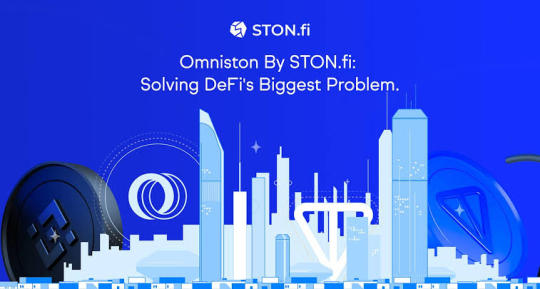
When it comes to decentralized finance (DeFi), one question often looms large: How can we make trading more secure, efficient, and accessible for everyone? The answer may lie in Omniston, a groundbreaking innovation on STONfi DEX that’s transforming how we think about liquidity and trading.
In this article, I’ll break down what Omniston is, why it matters, and how it could be the future of trading for both the TON ecosystem and the broader DeFi industry.
What Is Omniston
At its core, Omniston is a decentralized liquidity protocol designed to work seamlessly within the STONfi DEX. Instead of relying on traditional liquidity pools, Omniston connects traders directly with market makers through a Request for Quote (RFQ) mechanism.
Imagine you’re at a bustling farmer’s market. Instead of blindly accepting the first price offered for a basket of apples, you get to ask every vendor for their best price. Once you find the best deal, you make the purchase directly, without middlemen or unnecessary fees. That’s essentially how Omniston works—only in the digital world of cryptocurrency trading.
Why Does Omniston Matter
If you’ve ever traded on a DEX, you know that security, slippage, and liquidity fragmentation can be major headaches. Omniston tackles these challenges head-on, offering a suite of benefits that make trading not only safer but also more transparent and cost-effective.
1. Full Control Over Your Funds
With Omniston, you’re always in charge. Funds stay in your wallet until the moment a trade is executed. There’s no need to deposit assets into a centralized exchange or third-party platform. It’s as if you were holding your cash until the very second you hand it over for a purchase—ensuring complete control and minimizing risks.
2. No Middlemen, Just Smart Contracts
In traditional trading systems, trust often rests on third parties, like brokers or centralized platforms. Omniston eliminates this need. Using smart contracts, trades happen only when both parties meet the agreed terms. Think of it as a handshake deal that’s automatically enforced by technology—no room for misunderstandings or foul play.
3. Transparent and Predictable Pricing
We’ve all experienced hidden fees or unexpected costs at some point, whether in traditional finance or crypto. Omniston’s RFQ mechanism ensures that you know exactly how much you’re paying and receiving before you confirm a trade. There’s no slippage or price surprises—just clear, upfront pricing every time.
STONfi DEX and Omniston: A Perfect Partnership
STONfi DEX has always been about pushing the boundaries of what’s possible in decentralized trading. The introduction of Omniston takes this mission to the next level, addressing some of the biggest challenges in DeFi today.
Unified Liquidity for Seamless Trading
Liquidity fragmentation has long been a problem in the DeFi space. When liquidity is spread across multiple platforms, it can be hard to find the best prices. Omniston unifies liquidity within STONfi DEX, making it easier for traders to access competitive rates without hopping between platforms.
Efficiency at Its Core
Omniston combines the best of on-chain and off-chain trading processes. While trades are initiated off-chain for speed, they’re settled on-chain for security. It’s like blending the speed of a digital payment app with the security of a bank vault—fast, reliable, and safe.
A Gateway to the TON Ecosystem
For developers and projects, Omniston offers unparalleled access to the TON ecosystem. With millions of users and countless unique projects, STONfi DEX becomes a gateway to a thriving blockchain community, powered by Omniston’s innovative technology.
Why Liquidity Matters in Crypto
To understand the impact of Omniston, it helps to think about liquidity. Liquidity is the lifeblood of any trading system, much like cash flow is to a business. Without sufficient liquidity, transactions become slower, costlier, and less predictable.
Omniston changes the game by pooling liquidity into a single, unified system. This ensures that every trader—whether you’re swapping $10 or $10,000—gets the best price available. It’s like walking into a store where every product is always in stock and priced fairly.
The Bigger Picture: Omniston’s Role in DeFi
Omniston isn’t just a new feature—it’s a glimpse into the future of DeFi. By addressing key pain points like security, transparency, and liquidity fragmentation, it’s setting a new standard for decentralized exchanges.
For users, this means a better trading experience that’s both intuitive and secure. For developers and projects, it opens doors to new opportunities within a growing ecosystem. And for the broader DeFi community, it’s a step toward a more connected and efficient financial system.
Final Thoughts
Innovation is at the heart of DeFi, and Omniston is a perfect example of what’s possible when technology meets user needs. By integrating this protocol into STONfi DEX, we’re not just improving the trading experience—we’re building a foundation for the future of decentralized finance.
Whether you’re a seasoned trader or just starting your DeFi journey, Omniston offers a level of security, transparency, and efficiency that’s hard to beat. It’s time to rethink how we trade and embrace the possibilities that innovations like this bring to the table.
Let’s continue the conversation: What excites you most about Omniston and its role in the STONfi DEX ecosystem?
4 notes
·
View notes
Text
#blog post#rfp#rfi#rfq#what is difference between rfi#rfp and rfq#partner portal#supply chain#vendor management system#procure to pay software
0 notes
Text
Omniston on STONfi DEX: The Future of Secure and Transparent Trading

In the world of decentralized finance (DeFi), security and transparency are top priorities. That's where Omniston, a groundbreaking feature on STONfi DEX, comes in. It’s set to transform the way we trade and interact with cryptocurrencies, and in this article, I’ll explain exactly what it is, how it works, and why it’s a big deal for you.
What Is Omniston
Omniston is a decentralized liquidity protocol that’s designed to simplify and enhance trading on STONfi DEX. It uses something called a Request for Quote (RFQ) mechanism, which allows traders to connect directly with market makers. This is a significant shift from traditional liquidity pools where assets sit idly, waiting to be used.
If you’ve ever tried to buy something online and had to wait for the best deal, you’ll appreciate Omniston’s approach. Instead of just offering you a price based on the liquidity available at the moment, Omniston lets you request a price and then choose the best one offered by market makers. It’s like a digital marketplace for trading, but with enhanced control and efficiency.
Why Should You Care About Omniston
You might be wondering, "Why does Omniston matter to me?" If you’ve ever traded on a decentralized exchange (DEX), you know how challenging it can be to find the right price and ensure that your funds are safe. Here’s how Omniston makes a difference:
1. You Control Your Funds, Always
The biggest concern for many in DeFi is the safety of their funds. Omniston solves this by letting you maintain control of your assets throughout the entire trading process. You don’t have to deposit your funds into a centralized system or trust someone else to hold your money. When you initiate a transaction, the funds stay in your wallet until the deal is finalized. This reduces the risk of hacks or mismanagement.
2. No Middlemen, No Trust Required
In traditional finance, you often have to trust a third party, like a bank or exchange, to facilitate the transaction. In DeFi, however, trust is minimized. Omniston uses smart contracts to ensure that trades happen only when both parties meet their agreed-upon terms. There’s no need to rely on any middleman or intermediary—everything is automatic and secure, based on the rules set by the blockchain.
3. No Hidden Fees and Full Transparency
Have you ever been caught off guard by hidden fees or unexpected costs when trading? With Omniston, that won’t happen. Thanks to its RFQ mechanism, you can clearly see the price you’ll pay for a trade before you confirm it. You won’t encounter surprise slippage or fees because everything is transparent and outlined up front. This kind of clarity is something that can often be missing in traditional trading systems.
How Does Omniston Improve the STONfi DEX Experience
STONfi DEX has always been about empowering users and making decentralized trading more accessible. With the introduction of Omniston, it takes things to a whole new level.
Unified Liquidity: In the past, liquidity has been scattered across different platforms, which can make it hard to find the best prices. Omniston brings liquidity together in one place, creating a more efficient trading environment where users can get the best deals without jumping between platforms.
Efficiency at Its Best: Omniston’s integration combines the best of on-chain and off-chain processes. Trades are initiated off-chain and then settled on-chain, allowing for quicker, cheaper, and more efficient transactions. This is like cutting through the red tape and streamlining the entire process.
Better Access for Developers: Omniston is also a boon for developers. It allows them to tap into a larger pool of liquidity and connect their projects with a wider audience. With millions of users in the TON ecosystem, this opens up a wealth of opportunities for those looking to build and grow within the space.
Why Liquidity Matters More Than You Think
If you're new to crypto trading, understanding liquidity is key. Think of liquidity like water: it needs to be abundant and easily accessible for the whole system to work efficiently. If liquidity is fragmented across multiple platforms, it becomes harder to get the best prices, and the process slows down.
Omniston solves this by creating a unified liquidity system. This ensures that when you trade, you have access to all available liquidity, meaning you can always get the best price in a fraction of the time.
The Bigger Picture: Omniston's Impact on the DeFi Ecosystem
Omniston is more than just a new feature for STONfi DEX—it’s part of a broader push to make DeFi more secure, transparent, and user-friendly. By eliminating the need for middlemen and giving traders more control over their funds, Omniston is setting a new standard for decentralized exchanges.
For you, this means a better, more reliable trading experience. Whether you’re an experienced trader or someone just getting into DeFi, Omniston simplifies the process, enhances security, and reduces fees. It’s a big leap forward in creating a decentralized financial system that actually works for everyone.
Final Thoughts
Innovation in DeFi is happening at an incredible pace, and Omniston is one of the most exciting developments I’ve seen in a while. By combining smart contract technology with a revolutionary RFQ mechanism, it provides a solution that addresses some of the biggest pain points in decentralized trading today.
The introduction of Omniston on STONfi DEX is a huge step toward making DeFi more accessible, secure, and efficient for everyone. If you’ve been hesitant to dive into decentralized trading because of security concerns or hidden fees, Omniston provides the clarity and control you need to make the leap.
It’s time to embrace the future of DeFi, and Omniston is leading the way. What do you think about these innovations? Let’s talk in the comments below!
3 notes
·
View notes
Text
Omniston on STONfi DEX: Simplifying DeFi for Everyone

The world of decentralized finance (DeFi) is constantly evolving, and with each advancement comes new opportunities to improve the way we trade and manage our assets. One such innovation is Omniston, a feature integrated into the STONfi DEX that aims to reshape how decentralized trading works. Let me walk you through this in the simplest way possible so you can see why this matters to you and the broader DeFi ecosystem.
What is Omniston, and Why Should You Care
Think of Omniston as a smart marketplace for crypto trading. Instead of relying on traditional liquidity pools, where your assets sit idle waiting for someone to trade against them, Omniston connects you directly with market makers.
Here’s a relatable analogy: imagine you want to buy a car. Instead of visiting multiple dealerships and negotiating prices, you post your desired car specifications and wait for sellers to offer their best deals. Once you pick the one that suits you, the transaction happens directly. That’s essentially how Omniston operates, using a Request for Quote (RFQ) system to ensure traders get the best offers for their swaps.
Why is Omniston Different
1. Full Control Over Your Funds
Imagine keeping your money in your wallet instead of handing it to someone else while waiting for a deal. With Omniston, you maintain complete control of your assets until the moment of the transaction. This eliminates the risk of someone mishandling or misusing your funds.
2. No Need to Trust Anyone
In the world of traditional trading, trust is a huge factor—you’re often required to trust platforms or third parties to handle your assets securely. With Omniston, trust isn’t necessary because everything is governed by smart contracts. These are automated agreements written into the blockchain that ensure the terms are met before the transaction happens. It’s like having a foolproof contract that executes itself without bias.
3. Crystal-Clear Pricing
If you’ve ever been surprised by hidden fees or unexpected costs, you’ll appreciate Omniston’s transparency. When you use the RFQ system, you know exactly how much you’re paying and receiving before confirming the trade. No hidden charges, no unpleasant surprises—just straightforward trading.
How Does Omniston Enhance STONfi DEX
STONfi DEX has already earned a reputation for its user-friendly approach to decentralized trading. Adding Omniston only strengthens its position as a leading platform in the DeFi space.
Unified Liquidity: Rather than fragmenting liquidity across various platforms, Omniston brings it all together in one place. This makes trading more efficient and provides access to a broader range of tokens.
Speed and Efficiency: By combining off-chain order processing with on-chain settlements, Omniston ensures faster and cheaper transactions. This dual approach eliminates unnecessary delays and hefty fees often associated with other platforms.
Better Ecosystem Access: Developers and traders alike benefit from Omniston’s integration. It opens up opportunities to connect with millions of users and projects within the TON Space ecosystem, creating a thriving network of possibilities.
Why Unified Liquidity Matters
To understand the importance of unified liquidity, let’s consider another analogy. Think of liquidity as water. If you have a small amount scattered across several cups, it’s not very useful. But if you pour all the water into one large container, you have a more practical resource.
Omniston applies this principle to trading by pooling liquidity into a single platform. This means traders can access better prices and larger volumes, while projects benefit from increased visibility and participation.
Why This Innovation Matters
At its core, Omniston addresses some of the most persistent challenges in DeFi—security, transparency, and accessibility. By leveraging smart contracts and the RFQ system, it ensures that users have a seamless experience without compromising on safety or control.
For experienced traders, this means better prices and faster trades. For newcomers, it simplifies the process, making DeFi less intimidating and more approachable. And for the DeFi ecosystem as a whole, it sets a new standard for how decentralized trading should work.
The Bigger Picture
Omniston isn’t just a feature; it’s a step toward creating a more unified and user-friendly DeFi landscape. Its integration with STONfi DEX demonstrates the platform’s commitment to innovation and user-centric solutions.
Whether you’re a seasoned trader looking for efficiency or a beginner wanting to explore DeFi without unnecessary risks, Omniston offers a solution that feels intuitive and reliable. It’s more than just technology—it’s a practical tool designed with real users in mind.
Final Thoughts
In a space as dynamic as DeFi, advancements like Omniston remind us why decentralization matters. It’s about giving power back to the users, ensuring security without compromise, and making financial systems accessible to everyone.
As someone deeply invested in this ecosystem, I believe Omniston on STONfi DEX is a game-changer. It simplifies the complex, removes unnecessary barriers, and opens up opportunities for traders and developers alike. If you’ve been hesitant about diving into DeFi, now might be the perfect time to explore how innovations like this can make your journey smoother and more rewarding.
What are your thoughts on Omniston? Let’s discuss!
3 notes
·
View notes
Text
Unlocking the Future of Cross-Chain Transactions: A Practical Guide
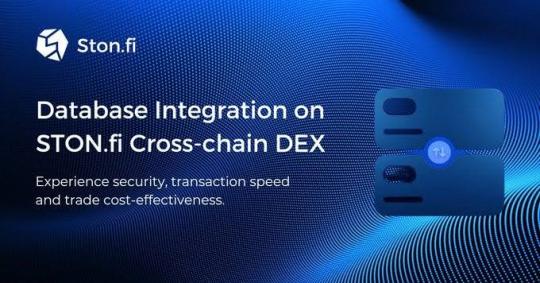
As crypto continues to grow, one major challenge stands in the way of truly unlocking the potential of blockchain technology: cross-chain transactions. Moving assets between different blockchains can feel complicated and sometimes frustrating, especially when you're trying to make a simple transfer.
But what if cross-chain transactions could be as seamless as sending an email or transferring money between your bank accounts? That’s the future we’re working towards. Let’s break down why cross-chain transactions are so difficult today and how new solutions are changing the game for users like you.
Why Cross-Chain Transactions Can Be a Hassle
To understand why cross-chain transactions are a challenge, think of blockchain networks like isolated islands. Each island has its own rules, resources, and way of doing things. Moving from one island to another means navigating unfamiliar terrain, often facing barriers like high fees, delays, and security risks.
Let’s look at some common methods for moving assets:
1. Centralized Exchanges (CEXs):
These are like big money transfer services where you can exchange one asset for another. However, you have to trust them with your funds, which can be risky. Plus, the fees are usually higher than you might expect, and the process isn’t as fast or transparent as it could be.
2. Blockchain Bridges:
These are decentralized alternatives, but the technology isn’t perfect. Blockchain bridges can fail, leading to lost funds. They’re also slow, which means waiting hours or even days to complete a transfer.
3. Decentralized Exchanges (DEXs):
DEXs allow for peer-to-peer transactions, but the problem of slippage (where the price you pay differs from the price you expected) is still very much present.
The end result? Cross-chain transactions are slow, expensive, and sometimes risky, making the process feel like more of a challenge than it should be.
A Better Way Forward: Innovative Solutions for Cross-Chain Transactions
The good news is that change is coming. Some platforms are looking at these problems from a different angle and solving them in ways that benefit users like you. Let’s explore some solutions that are making cross-chain transactions easier, faster, and more secure.
1. Locking in Rates Before You Swap (RFQ Protocol)
Imagine you want to exchange one currency for another. You don’t want to risk the exchange rate changing while you’re in the middle of the transaction. The RFQ (Request-for-Quote) protocol helps fix the rate before you even commit to the swap. This is like locking in a price before you make a purchase — it removes uncertainty and ensures you know exactly what you're getting.
2. No Need to Trust a Third Party
In most cases, when you send funds to an exchange or bridge, you're trusting that platform to hold your assets safely. With new cross-chain solutions, the funds stay in your own wallet until the moment the transaction is completed. This gives you more control and reduces the risks that come with giving a third party access to your funds.
3. Instant Transactions, No Waiting Around .
Speed is a huge factor when it comes to cross-chain transactions. With many platforms, you’re left waiting for hours for your assets to arrive. But what if transfers could be completed in seconds? The latest innovations are making this a reality, using internal databases and advanced communication methods to ensure your transaction is processed almost instantly. It’s like sending a text message instead of waiting for a letter to arrive.
4. Transparent Pricing and Lower Fees
Transparency is key in crypto. No one likes hidden fees that pop up at the last minute. The best platforms for cross-chain transactions now show you exactly what you’ll pay upfront, so there are no surprises. Plus, lower fees mean you get to keep more of your assets. It’s like seeing a menu with clear prices instead of being surprised by the final bill.
Why This Matters to You
So, what does all this mean for you as a user?
1. You Keep More of Your Assets: Lower fees and better pricing translate into more value in your pocket.
2. Your Transactions Are Faster: No more waiting hours for a transfer to go through.
3. You Stay in Control: By keeping your funds in your wallet until the transaction is completed, you reduce the risk of losing them to a third-party hack or failure.
3. Clarity in Every Step: You know exactly what you’re paying for and how much you’re getting in return.
The Bigger Picture: A Unified Blockchain Ecosystem
Cross-chain interoperability isn’t just about convenience. It’s the key to unlocking a fully connected blockchain ecosystem. Right now, blockchains operate like isolated communities, each with their own rules and standards. But as solutions like the ones discussed here evolve, blockchains will be able to communicate with each other more seamlessly, allowing assets and information to flow freely across platforms.
Think of it like how the internet revolutionized communication. When email was first introduced, you needed to be on the same platform as the person you wanted to send an email to. But over time, email systems became interoperable, meaning you could communicate with anyone, anywhere. The same will happen with blockchain — cross-chain transactions will become as simple as sending an email.
Wrapping Up: The Future Is Bright
The future of cross-chain transactions is bright, and it’s happening now. Platforms that prioritize speed, security, and transparency are paving the way for a blockchain ecosystem that’s easier to navigate, more cost-efficient, and more secure.
If you’re navigating the world of blockchain and crypto, keep an eye on these innovations. The next generation of cross-chain solutions isn’t just about making things easier — it’s about unlocking the true potential of decentralized finance for everyone.
What do you think? Have you experienced the challenges of cross-chain transactions? Feel free to share your thoughts in the comments below!
4 notes
·
View notes
Text
The Rise of B2B Marketplaces
B2B marketplaces serve as digital meeting points for buyers and sellers. Over the last decade, they have gained traction due to the convenience, speed, and efficiency they offer to businesses looking to trade internationally. Traditional methods of sourcing and procurement, involving in-person meetings, trade shows, or middlemen, are increasingly being replaced by digital platforms like TradeKey.
TradeKey, launched in 2006, is one of the pioneers in the B2B online space, providing a platform where manufacturers, suppliers, importers, and exporters can interact seamlessly. The platform caters to various industries, including electronics, machinery, agriculture, textiles, chemicals, and more. With its headquarters in Saudi Arabia, TradeKey has a strong presence globally, particularly in emerging markets across Asia, the Middle East, and Africa.
TradeKey’s Unique Selling Proposition (USP)
What sets TradeKey apart from other B2B platforms is its focus on trust and verification. Given the rise of fraudulent activity and scams in international trade, buyers and sellers alike require a platform that ensures safety and reliability. TradeKey addresses this need through its Verified Buyers Database, a unique feature that guarantees that the buyers listed on the platform have undergone a rigorous verification process. This verification process helps in minimizing the risk of fraud and instills confidence in businesses using the platform.
This Verified Buyers Database is particularly valuable for suppliers and exporters looking to tap into global markets without the fear of encountering fake buyers or fraudulent transactions. TradeKey’s platform also allows businesses to verify potential buyers, ensuring that both parties involved in a transaction can trust each other, which is a significant advantage in today's interconnected global trade environment.
Navigating TradeKey: Key Features and Benefits
Global Reach and Industry Focus: TradeKey’s platform is vast, covering more than 9 million registered users from 240 countries. Its global network spans a wide array of industries, allowing businesses to find partners from virtually any sector. The platform's design allows suppliers and buyers to search for products based on industry categories, making it easier to find the right match.
Verified Buyers and Suppliers: As mentioned earlier, TradeKey’s verification system is one of its most crucial aspects. By focusing on transparency, the platform enhances trust among users. Verified buyers and suppliers can negotiate with greater confidence, reducing the risk of scams or unreliable business deals. This feature is particularly beneficial for small and medium-sized enterprises (SMEs), which may lack the resources to conduct extensive background checks on potential partners.
Trade Shows and RFQs: TradeKey provides access to global virtual trade shows, allowing businesses to showcase their products to a global audience without the costs associated with physical participation. Additionally, businesses can post Request for Quotations (RFQs), making it easy to receive proposals from multiple suppliers or manufacturers. This feature streamlines the procurement process, especially for buyers looking to compare offers and select the best deal.
Digital Marketing and Branding Support: Beyond merely connecting buyers and suppliers, TradeKey also offers digital marketing and branding solutions. The platform provides tools to help businesses optimize their listings, making them more visible to potential buyers. Through effective SEO techniques, businesses can ensure their products appear at the top of search results, increasing visibility and lead generation.
Buyer and Seller Communication Tools: Communication is key in B2B transactions, and TradeKey has built-in communication tools that allow for direct messaging, inquiries, and real-time negotiations between buyers and sellers. This reduces the time typically involved in email exchanges or delayed responses, helping to speed up decision-making and order placement.
Market Insights and Analytics: TradeKey also offers access to valuable market data and analytics, which can guide businesses in making informed decisions. By understanding market trends, buyer preferences, and pricing strategies, businesses can fine-tune their offerings and enhance their competitiveness in the global market.
Security and Trust: Overcoming B2B Fraud
One of the biggest challenges in the B2B space is the prevalence of scams and fraud. Many businesses, especially smaller ones, are wary of international trade due to the risk of dealing with unknown or unverified parties. TradeKey addresses these concerns by offering TradeKey GoldKey Membership and TradeKey TrustPass Membership, which provide additional layers of security and credibility for businesses. These memberships allow companies to display their verified status, making them more attractive to potential buyers.
TradeKey also actively educates its users about B2B safety, offering guides on how to avoid scams, identify red flags, and ensure secure payment methods. The platform's dedication to transparency and security has made it a trusted name in the industry, particularly among SMEs looking to expand globally.
The Role of TradeKey in Global Business Growth
In the context of the global supply chain, TradeKey has become a significant facilitator of cross-border trade. Its role is particularly important for businesses in developing regions, where access to global markets might otherwise be limited. By providing a safe, efficient, and user-friendly platform, TradeKey is not only helping businesses find international buyers and suppliers but also contributing to global economic growth by fostering trade partnerships.
Conclusion
As the world becomes increasingly connected, platforms like TradeKey will continue to play a vital role in enabling international trade. With its focus on trust, verification, and ease of use, TradeKey has positioned itself as a go-to platform for businesses looking to expand their global footprint. Whether you are a buyer seeking reliable suppliers or a seller aiming to reach new markets, TradeKey offers the tools, resources, and support needed to succeed in today’s competitive B2B landscape.
By emphasizing security and fostering transparency, TradeKey ensures that businesses can engage in global trade with confidence, making it an invaluable resource in the modern business world
3 notes
·
View notes
Text
IETM for beginners A Quick Guide to IETM
The main objective of this page is to give a quick insight into IETM. You may have many assumptions related to IETM. We tried to cover all the aspects related to IETM.
Interactive Electronic Technical Manual, in short, is called IETM. If you are a supplier of defence then along with the system/equipment you also need to provide training aids like CBT, Charts and blowup diagrams, Video films, Training work Modules, and a few sets of Hard copies of the manuals and IETM.
Till 2015, mainly Hardcopies and PDFs in DVDs used to be in deliverables. From 2015 onwards IETM is used in RFQ/SOTR/SCOPE as a deliverable.
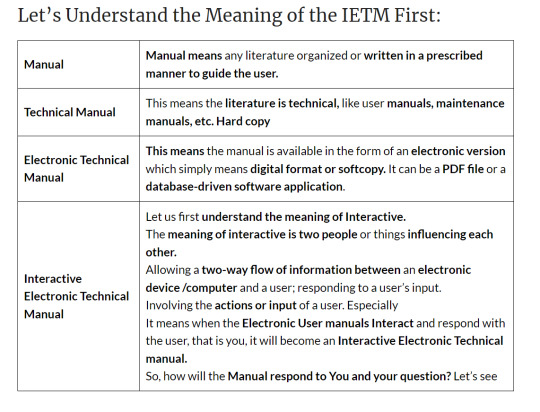
As per the above definitions, it is clear that we need a Technical Manual that too in soft copy and which will be able to talk to us or able to respond to us.
When the Manual responds to user questions then it is called an Interactive Electronic Technical Manual.
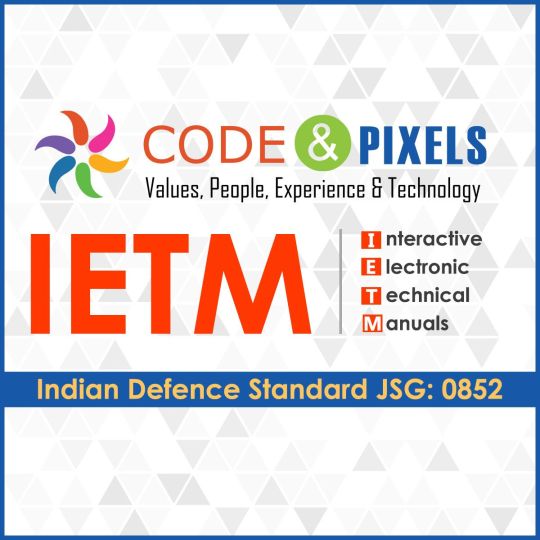
How will the document be able to respond? We need to embed or integrate this soft copy or content into one application so that the application will respond or interact. What are the common interactivity features so that the User will be able to get the information from the software?
Interactive Features Will Be Like:
Navigation
Linear navigation (moving in the fixed or pre-defined path..e next – previous topics
Non-liner navigation ( it means the user can go to any topic randomly)
Page Search
Global Search
Best Matched
Content Tree
Related Topics
Core IETM
Documents
Drawings
Interactivity
Hyperlinks
Hot Spots
Text Hotspot
Image Hotspot
Video Hotspot
Bookmarks
Annotation
The documents and pages are many hence, for easy and fast accessibility complete content is converted and stored as a database. Whenever the user wants some information, IETM software produces the information in a fraction of a second.
IETM is a combination of software applications and databases.
What is the Use or Purpose of the IETM?
Any manual’s purpose is to give information related to the equipment to the end user for quick reference.
All the technicality is written in detail so that when an issue arises, the user can refer to the manual, as every time OEM or technical person or subject matter expert might not be available on the spot to resolve the issue.
If the manual has 10 pages users can refer easily. But any system used by the defence will have multiple manuals and thousands of page counts and many times a user has to cross-refer between manuals, intra-manual and inter-manual to resolve the issue.
Referring to 10- 15 hard-copy or even soft-copy books simultaneously will be difficult and time-consuming. Using IETM software, users can solve in a single click and seconds.
How to Access the IETM
IETM is a web-based application like our bank software or any other web application. The graphic user interface will be provided to use IETM through which users can interact and get the desired data.
Like all other standard software, Unauthorized users cannot access the IETM. IETM is Login login-based application. Only users having valid Login credentials can access the software.
Based on the user log credentials data will be provided to the user. IETM has 2 types of users and one Administrator.
Maintainer
Operator
If the operator logs in, the user gets all the content related to operator use, similarly if the maintainer logs in only maintenance-related content is visible for that user.
Ideally, all the content is available for both users, because the purpose of the IETM is to refer to the manual to fix the issue.
Administrators can create users who can see the user’s navigation and log-in history and interact with the users using user dashboards through Annotations.
In any case, Only OEM has the right to update or modify the content. Users can only refer to the content.
What inputs are needed from OEM to create IETM:
All the softcopies of user manuals to be converted to IETM.
All images Videos, and drawings to be integrated into IETM.
Table of contents/tree structure.
Subject matter expert to resolve technical clarifications.
All the manuals should be editable i.e. open files which do not have passwords or Locks and copy-protected PDFs.
Minimum Hardware Requirements for optimal performance of IETM
NO High-end hardware or servers are required to run IETM. However, if more concurrent users then a good configuration server with good LAN connectivity must be ensured.
i3 with 8 GB RAM systems is the minimum configuration required for the server or for Node.
Deliverables
BASED DB (Manuals are covered in the Database)
IETM VIEWER Software
User Manual and Installation Manual
Standards Compliance
The IETM framework complies with Indian Defence standards, JSG 0852
What is IETM and What is Not IETM?
IETM Vs 3D Blowups
There is a misconception about IETM. As the name indicates interactive, people assume that it is a 3D based on blowup software. Interactive means, users can browse or cross-refer or interact with the software to search on a particular topic/sub-topic.
3D Animations and blowups can be taken as separate tasks based on the complexity of the system and the level of blowups that you want. We have a separate division to take up such assignments.
If your SCOPE /SOTR /RFP says IETM then stick to IETM only.
These 3D animations, 3d Blowups, and virtual reality cost more than IETM cost. They will be good to see definitely but they are not part of IETM. If your client wants 3d and if the scope specifically mentions 3d then it is a separate deliverable but not IETM.
There is no link between IETM and 3d. If you have 3D animations or blowups, you can integrate into IETM.
Understand the difference between IETM VS CBT VS Virtual reality.
Another important point to check is which IETM level the client/ SCOPE is asking for. Generally, they may ask for Level 3 or Level 4. (If your RFQ is 5 years old around 2016-17 then they may ask for Level 2 or 3)
Level -3 costs less price than Level -4. If you have a choice to select, then select IETM -3 as it is very economical.
The latest RFPs / SCOPE asks for Level -4 only.
Costing of IETM
Level of IETM, is it Level 3 or Level 4
Cost will be based on the number of pages that are to be converted.
The vendor calculates the cost per page.
And a fixed cost of IETM viewer software.
If you want to create IETM by yourself self then you also need to buy IETM authoring software.
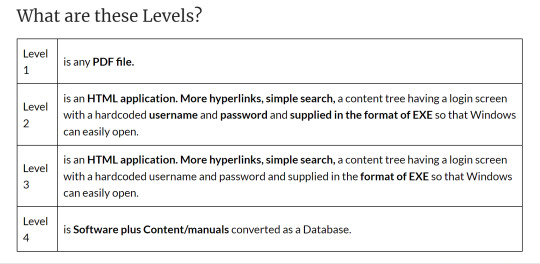
Regarding Level -5, rest assured, till 2028 it will be Level 4 only. As of now, there is nothing practically called Level -5. Few are calling virtual reality and Augmented reality and Artificial intelligence Level 5.
Pulling data from many user inputs and analyzing and giving results are done in Level -5.
IETM software can not pull the data from various real-time points as No OEM will give the real-time information to third-party software directly. Yes, if the information is available offline, then that information can be imported into IETM and can be used as a reference.
Implementing VR/AR and Artificial Intelligence itself costs 10 times more than the actual equipment cost. Hence for the next few years, AR/VR and artificial intelligence are affordable.

Want to see the IETM software?
Until you see the software, you will not be able to understand it fully. Hence, we strongly recommend you have a virtual meeting for 15 minutes so that you will have a fair idea about the IETM software.
Write an email to [email protected] or call 9849527706 to fix up the quick demo on IETM.
Our Expertise:
Code and Pixels Interactive Technologies Private Limited (CNP) is an IETM service provider based in Hyderabad (India). We provide end-to-end Software development and IETMs (INDIAN STANDARD IETM JSG 0852, LEVELS 3 and 4 )
Code and Pixels is the only Company, that delivered 50 plus IETMs (Class 3, Class 4) to Indian defence and many corporates i.e. Tata, L&T, Nova, Ashok Layland, Mahendra Defence, BAeHAL, Marine Electricals, Idea Forge, Raphe mPHibr, Navcon, Zen technologies, Kirloske, Avision, Alterra, Jyoti Ltd, Data patterns, DESMI, Man Energy and Defense labs and production agencies and shipyards such as DRDL, RCI, ASL, BDL, ECIL, BEL, HSL, and many OEMs.
We have worked in association with the Naval Technical Group of the Navy and also with the eMMS team of the Indian Air Force and MAG (DRDL) of the Indian Army. Having vast experience, we assure you that we will be your trusted technology partner in delivering IETMs.

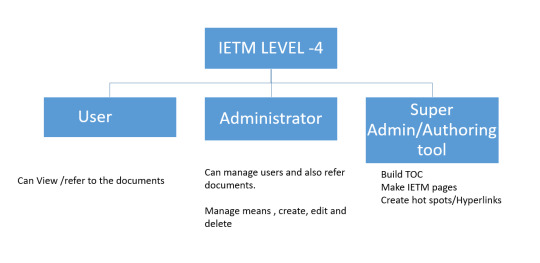
#ietm#ietm code and pixels ietm hyderabad#software#technology#code and pixels#ietm developement#ietm level iv#ietm software#elearning#codeandpixels
2 notes
·
View notes
Text
Top SAP MM Consultant Interview Questions: Prepare for Success
What is the scope of SAP MM?
The scope of SAP MM (Materials Management) is quite extensive, covering a wide range of procurement and inventory management processes within an organization. Here are the key areas that fall under the scope of SAP MM:
Material Master Data: SAP MM encompasses the management of material master data, which includes details about materials, such as descriptions, classifications, storage locations, and purchasing information.
Procurement Processes: SAP MM covers various procurement processes, including purchase requisitions, purchase orders, request for quotations, vendor evaluation, and contract management. It ensures smooth and efficient procurement of goods and services.
Inventory Management: SAP MM facilitates effective management of inventory, including stock monitoring, goods receipts, goods issues, stock transfers, physical inventory, and stock valuation.
Warehouse Management: SAP MM integrates with SAP Warehouse Management (WM) module to handle warehouse operations, such as inbound and outbound processes, storage bin management, and inventory control.
Invoice Verification: SAP MM includes functionalities for invoice verification, which involves comparing vendor invoices with purchase orders and goods receipts to ensure accuracy and initiate payment processing.
Material Requirement Planning (MRP): SAP MM supports MRP processes, which involve determining the materials and quantities required to fulfill production or customer demands, and generating procurement proposals accordingly.
Introduction: (sap mm consultant interview questions)
If you’re aspiring to become an SAP MM (Materials Management) consultant or have an upcoming interview for this role, it’s essential to be well-prepared. SAP MM consultants play a vital role in managing the procurement and inventory processes within an organization. To help you ace your interview, we’ve compiled a list of informative and common SAP MM consultant interview questions, along with some valuable insights and tips.
Question: What is the purpose of the SAP MM module, and what functionalities does it encompass?
Answer: The SAP MM (Materials Management) module focuses on managing the procurement and inventory processes within an organization. Its functionalities include material master data management, purchase requisitions, purchase orders, goods receipt, invoice verification, inventory management, and vendor management.
Question: How do you handle material master data in SAP MM, and why is it important?
Answer: Material master data in SAP MM is managed through the Material Master record. It contains detailed information about materials, such as descriptions, procurement details, storage locations, and accounting data. Accurate and up-to-date material master data is crucial for efficient procurement, inventory management, and reporting processes. It ensures that the right materials are available at the right time and at optimal costs.
Question: Can you explain the different types of procurement processes in SAP MM?
Answer: In SAP MM, the different types of procurement processes include:
Purchase Requisition (PR): A request to procure materials or services.
Request for Quotation (RFQ): Inviting suppliers to submit quotations for materials or services.
Purchase Order (PO): An official document to procure materials or services from a vendor.
Goods Receipt (GR): Recording the receipt of materials into inventory.
Invoice Verification: Verifying vendor invoices against purchase orders and goods receipts.
Question: How do you define a source list in SAP MM, and how is it used in the procurement process?
Answer: A source list in SAP MM is a list of approved vendors for a material. It helps ensure that only specific vendors are selected during the procurement process. The source list is maintained at the plant level and specifies the validity dates for each vendor. This helps control the procurement process and maintain consistent quality and pricing from approved vendors.
Question: Can you explain the difference between a purchase requisition and a purchase order in SAP MM?
Answer: A purchase requisition (PR) is an internal document that is used to request the procurement of materials or services. It initiates the procurement process. On the other hand, a purchase order (PO) is an official document issued to a vendor to procure materials or services. A PR is a request, while a PO is a formal commitment to purchase.
Question: How do you handle the subcontracting process in SAP MM?
Answer: The subcontracting process in SAP MM involves sending materials to a subcontractor for processing or assembly. Here are the key steps:
Create a subcontracting purchase requisition.
Convert the purchase requisition into a subcontracting purchase order.
Transfer the materials to the subcontractor using a goods issue.
Receive the processed or assembled materials using a goods receipt.
Perform invoice verification for the subcontracting services provided.
Question: How do you perform inventory management in SAP MM?
Answer: Inventory management in SAP MM involves tracking and controlling materials within the organization. Key activities include:
Goods Receipt: Recording the receipt of materials into inventory from vendors or other sources.
Goods Issue: Issuing materials from inventory for internal consumption or external use.
Stock Transfer: Transferring materials between different storage locations or plants.
Stock Adjustment: Adjusting inventory quantities due to physical inventory counts or other reasons.
Stock Valuation: Valuing inventory using various methods, such as moving average price or standard price.
Question: Can you explain the concept of a release strategy in SAP MM?
Answer: A release strategy in SAP MM defines the approval process for purchase requisitions and purchase orders based on predefined criteria, such as the value of the document or the purchasing organization. It ensures that the appropriate individuals or departments review and approve procurement documents before they are finalized and sent to vendors. Release strategies help maintain control and adhere to internal authorization requirements.
Question: How do you handle pricing conditions in SAP MM?
Answer: Pricing conditions in SAP MM determine the cost or price of materials during procurement. They include elements like base prices, discounts, surcharges, and taxes. Pricing conditions are maintained in condition records and can be automatically determined based on factors such as the vendor, material, quantity, or purchasing organization. The pricing procedure in SAP MM determines the sequence and logic for pricing condition determination.
Question: How do you handle vendor evaluation and selection in SAP MM?
Answer: Vendor evaluation in SAP MM is performed to assess and select the most suitable vendors based on criteria such as quality, delivery performance, and price. The evaluation can be based on subjective assessments or objective measures, such as on-time delivery percentages or defect rates. The results of vendor evaluation can be used to negotiate better terms, maintain a preferred vendor list, and improve overall procurement processes.
Question: How do you handle the process of invoice verification in SAP MM?
Answer: Invoice verification in SAP MM involves matching the vendor’s invoice with the purchase order and goods receipt to ensure accuracy and validity. The process includes:
Verifying that the invoice matches the purchase order and goods receipt.
Checking for any discrepancies or variances in quantities, prices, or terms.
Resolving any issues or discrepancies with the vendor.
Posting the invoice for payment processing in SAP FI (Financial Accounting).
Question: How do you handle stock valuation in SAP MM?
Answer: Stock valuation in SAP MM determines the monetary value of inventory items in the system. It can be done using various methods, such as moving average price or standard price. Moving average price calculates the average cost based on the goods received, while standard price uses a predetermined cost for valuation. Valuation is essential for accurate financial reporting and inventory control.
Question: Can you explain the concept of consignment in SAP MM?
Answer: Consignment in SAP MM refers to a scenario where a vendor’s materials are stored at the customer’s premises, but the ownership of the materials remains with the vendor until they are consumed. The customer only pays for the materials when they are actually used. Consignment stock is tracked separately in SAP MM, and the vendor’s liability is settled based on the consumption of the materials.
Question: How do you handle the integration between SAP MM and SAP SD (Sales and Distribution)?
Answer: Integration between SAP MM and SAP SD enables seamless flow of information and processes. Key integration points include:
Material Master Data: Materials created in SAP MM are used for sales order processing in SAP SD.
Availability Check: SAP SD checks the availability of materials in SAP MM to determine if the requested quantities can be delivered.
Delivery Processing: Deliveries in SAP SD trigger goods issue postings in SAP MM for inventory reduction.
Billing: Billing documents in SAP SD generate accounting entries for revenue recognition and financial reporting.
Question: How do you handle inventory optimization in SAP MM?
Answer: Inventory optimization in SAP MM involves maintaining optimal inventory levels to meet demand while minimizing excess stock. Some approaches to inventory optimization include:
Forecasting and Demand Planning: Using historical data and demand forecasts to predict future material requirements.
ABC Analysis: Classifying materials based on their consumption value to prioritize inventory management efforts.
Reorder Point Planning: Setting minimum stock levels that trigger replenishment to avoid stockouts.
Just-in-Time (JIT) Procurement: Aligning material procurement with production or customer demand to reduce inventory holding costs.
Question: How do you handle the process of subcontracting in SAP MM?
Answer: Subcontracting in SAP MM involves outsourcing certain operations or processes to a subcontractor. Here are the key steps:
Create a subcontracting purchase requisition.
Convert the purchase requisition into a subcontracting purchase order.
Transfer the components to the subcontractor using a goods issue.
Receive the finished or processed goods using a goods receipt.
Perform invoice verification for the subcontracting services provided.
Question: How do you handle the process of physical inventory in SAP MM?
Answer: Physical inventory in SAP MM involves conducting periodic stock counts to verify the accuracy of inventory quantities. Key steps include:
Planning and scheduling the physical inventory count.
Performing the physical count and recording the actual quantities.
Comparing the actual quantities with the system quantities.
Resolving any discrepancies or variances.
Adjusting the inventory quantities based on the findings.
Question: Can you explain the concept of batch management in SAP MM?
Answer: Batch management in SAP MM involves tracking and managing materials that are produced or procured in batches. Each batch is assigned a unique identification number and can be traced throughout the entire supply chain. Batch management is crucial for industries where product traceability, quality control, and shelf-life management are essential, such as pharmaceuticals and food manufacturing.
Question: How do you handle the process of vendor evaluation in SAP MM?
Answer: Vendor evaluation in SAP MM is performed to assess and rate vendors based on various criteria, such as quality, delivery performance, service level, and price competitiveness. The evaluation process typically involves creating evaluation questionnaires, collecting feedback from relevant stakeholders, analyzing the results, and generating vendor performance reports. The evaluation results help in making informed decisions regarding vendor selection and improvement initiatives.
Question: How do you handle the integration between SAP MM and SAP FI (Financial Accounting)?
Answer: Integration between SAP MM and SAP FI ensures the seamless flow of financial information related to procurement and inventory management. Key integration points include:
Goods Receipt: Goods receipts in SAP MM trigger accounting postings in SAP FI for inventory valuation and cost recognition.
Invoice Verification: Verified invoices in SAP MM generate accounting entries in SAP FI for expense recognition and liability settlement.
Asset Management: SAP MM provides information on fixed assets, which is integrated with SAP FI for asset accounting and depreciation.
Conclusion: (sap mm consultant interview questions)
Preparing for an SAP MM consultant interview requires a solid understanding of the module’s key concepts and processes. By familiarizing yourself with these interview questions and their insights, you’ll be well-equipped to showcase your knowledge, skills, and practical experience. Remember to supplement your theoretical understanding with real-world examples and demonstrate your ability to apply SAP MM principles in practical scenarios. Best of luck with your SAP MM consultant interview!(sap mm consultant interview questions)
2 notes
·
View notes
Note
wait what movement did rfq co opt? i don’t know much about her at all but it seems like a lot of people online love her
someone posted recently how she essentially wormed her way into a movement being lead by an Indigenous student called “We The Students” based off of “We The People” and made it all about sex ed
she’s also been extremely abelist in the past when ppl asked her to use plain language/explain terms
#it was supposed to be about decolonization AND sex ed but she let the media make it all about her and her movement#and did very little to support the other organizer#white woman behaviour
3 notes
·
View notes
Text
new RFQ is unsurprisingly very good on this:
"An essay is not the process of translating a fully-formed idea into words on a page; it is the process of discovering and testing an idea by challenging it with form, syntax, structure. The friction between idea and ability that AI evangelists promise to eradicate is not a problem suffered by a disadvantaged few. It’s the fundamental condition of the writer, and it is precisely through that friction that we discover what it is we actually have to say.
Expressing ideas effectively through writing is not something that people are born being able to do or not do; it’s a muscle that anyone can develop and that anyone can let atrophy. Even now, when I’m lucky enough to be able to write exactly what I want to write with very few external constraints, writing often feels difficult for me in the same way it did when I was pumping out listicles — slow, sticky, clunky, painful, humiliating. I wonder if this, too, is part of the appeal of AI: it is so often humiliating to push up against the limits of your ability. But I’ve had a lot of practice with it, and it’s that practice — not the books I’ve read or the ideas I’ve had — that has materially made me a writer."

58K notes
·
View notes